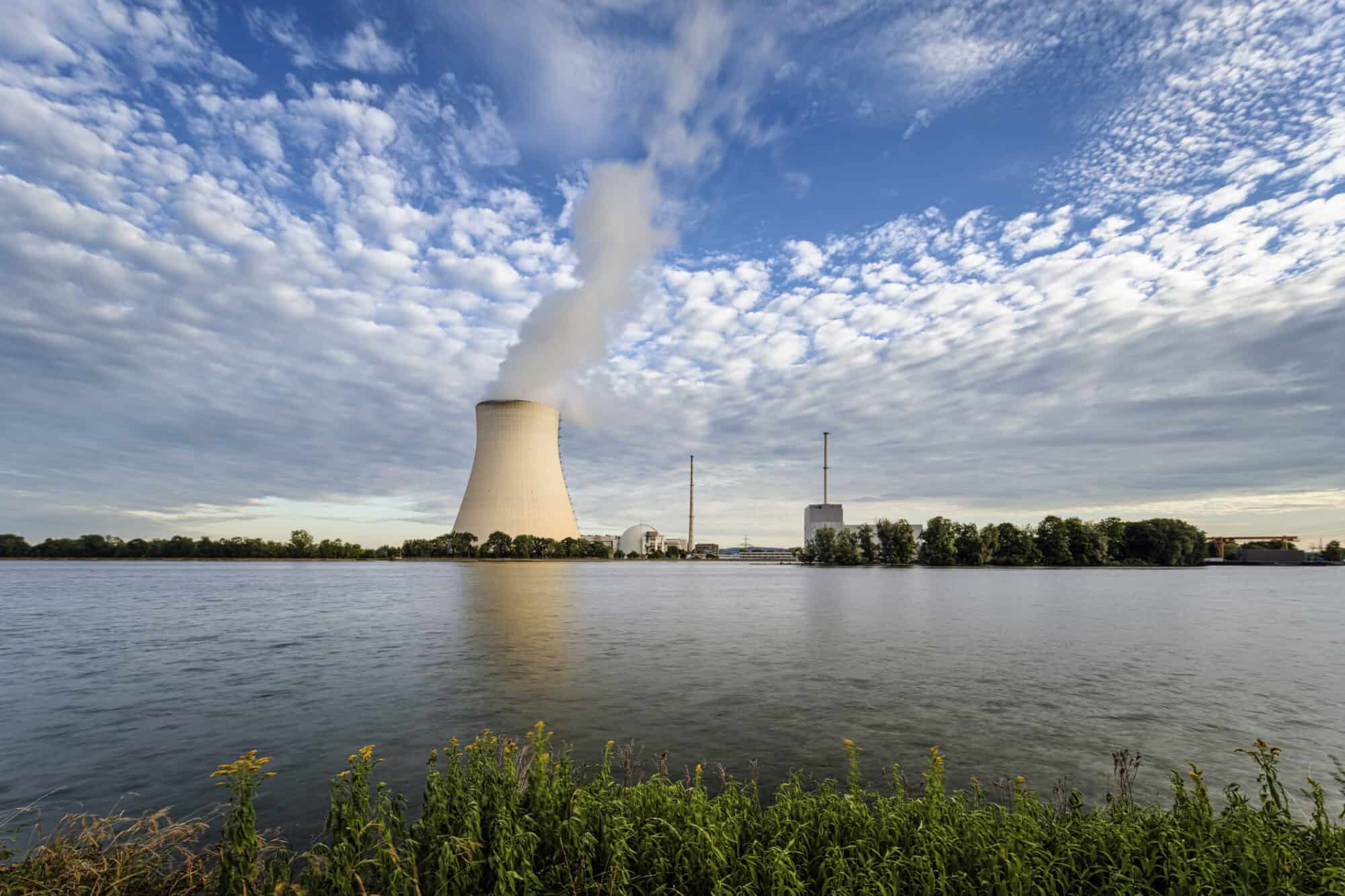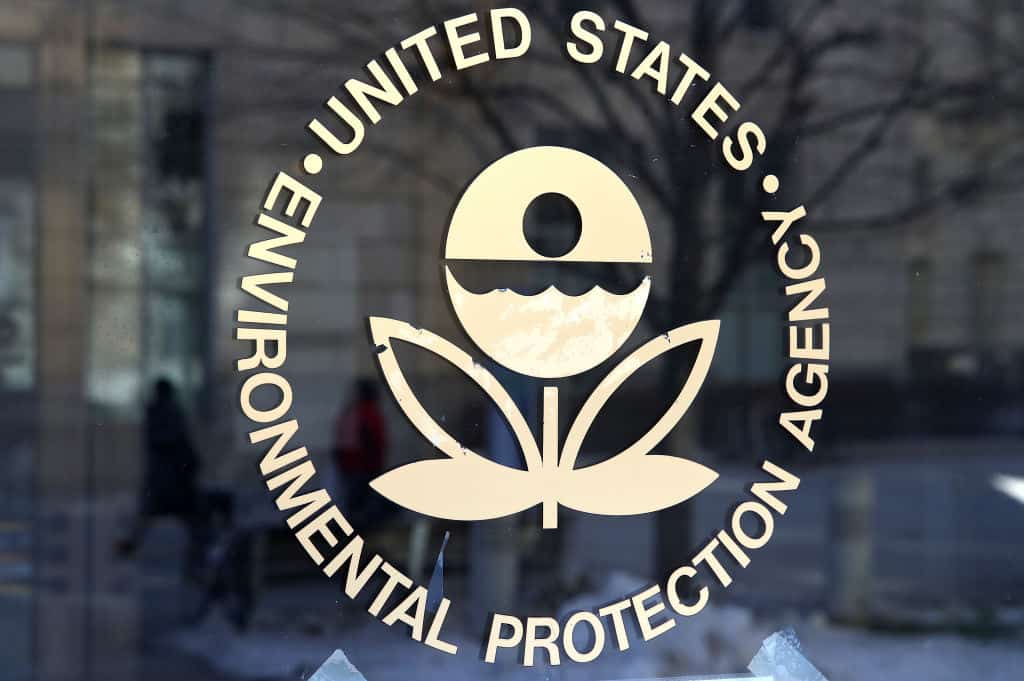AI Speeds Drug Development

High-tech drug development labs are training artificial intelligence to design therapeutic treatments more quickly, The New York Times (subscription) reports.
What it looks like: Laboratories are using processes that record huge amounts of data quickly and efficiently—a practice that technology has made possible.
- “[T]he real action is happening at nanoscale: Proteins in solution combine with chemical molecules held in minuscule wells in custom silicon chips that are like microscopic muffin tins. Every interaction is recorded, millions and millions each day, generating 50 terabytes of raw data daily—the equivalent of more than 12,000 movies.”
How it works: By harvesting tremendous amounts of data with mechanized accuracy, these labs can use AI tools to perform rapid experiments, recognize patterns and make predictions about possible solutions—all more quickly than a human practitioner.
- “The companies are leveraging the new technology—which learns from huge amounts of data to generate answers—to try to remake drug discovery. They are moving the field from a painstaking artisanal craft to more automated precision, a shift fueled by AI that learns and gets smarter.”
Why it’s exciting: Traditional drug development processes are typically extremely slow and expensive and frequently end in failure during the human clinical trials stage—often because the drug is not effective enough, or because drugmakers discover unforeseen side effects. With the benefit of AI, biopharmaceutical companies may be able to overcome these challenges.
- “Studies of the cost of designing a drug and navigating clinical trials to final approval vary widely. But the total expense is estimated at $1 billion on average. It takes 10 to 15 years. And nearly 90% of the candidate drugs that enter human clinical trials fail.”
Why it’s safe: The practice is designed to prevent the kind of issues that tend to plague generative AI, and any final medicine still requires significant human input.
- “Because AI for drug development is powered by precise scientific data, toxic ‘hallucinations’ are far less likely than with more broadly trained chatbots. And any potential drug must undergo extensive testing in labs and in clinical trials before it is approved for patients.”
Our take: During a recent event with Axios, titled “Balancing Innovation vs. Regulation,” NAM President and CEO Jay Timmons touched on some of the pioneering work biopharmaceuticals are doing using AI.
- “All of the innovations in the biopharmaceutical industry … are creating new cures for diseases that we’ve been battling for the whole history of mankind,” said Timmons. “We’re accomplishing all of these things now—and it’s so exciting.”
Dig deeper: The NAM’s first-of-its-kind report, “Working Smarter: How Manufacturers Are Using Artificial Intelligence,” details use cases for AI in manufacturing and case studies of how manufacturers are implementing AI technologies. In the report, Johnson & Johnson Executive Vice President and Chief Technical Operations & Risk Officer and NAM Board Chair Kathy Wengel shares how J&J uses AI in clinical trials.
- “When we conduct clinical trials, AI helps us more efficiently establish safety and effectiveness guardrails, while allowing us to conduct trials at a larger scale,” writes Wengel. “AI also gives us a far stronger mastery over our supply chains. Overall, it helps our people do a better job of living up to our commitment of improving health care outcomes and making our towns, country and world a better place.”
Manufacturers Rally to Advance Nuclear Energy

The NAM is pressing the U.S. Senate to support a bill that would promote clean nuclear energy development.
What it does: The legislation, called the Accelerating Deployment of Versatile, Advanced Nuclear for Clean Energy (ADVANCE) Act, offers a number of components to accelerate the development and commercialization of advanced nuclear reactor technologies. It includes:
- Permitting and approval reform to make it easier for reactor projects to locate on brownfield sites, land that is underused or has been abandoned because of industrial waste;
- “Early licensing work” provisions to help deploy reactors more quickly at national security infrastructure sites;
- A series of awards to encourage companies to develop advanced-reactor technology; and
- Hiring support for the Nuclear Regulatory Commission, which is understaffed to deal with the level of applications for new reactors.
Where it stands: The legislation was reported out of the Senate Environment and Public Works Committee with a bipartisan vote of 16–3, and companion legislation was passed in the House of Representatives by an overwhelming vote of 365–36. Now, the NAM is pushing the Senate to pass the bill.
Why it matters: “Nuclear-generated power is an important part of an all-of-the-above energy strategy, which is necessary to meet the power needs of a growing manufacturing sector,” said NAM Managing Vice President of Policy Chris Netram. “The ADVANCE Act would accelerate the development and commercialization of advanced nuclear reactor technologies through reforms to the existing licensing and permitting systems.”
Our action: The NAM is urging Congress to support the bill ahead of the Senate’s vote, detailing its benefits in a letter to senators.
The last word: “Manufacturers create jobs that support families, and develop and deploy innovative technologies that make our environment cleaner,” said Netram. “Increasing our nation’s energy supply, including the growth of nuclear power, will support manufacturing investments and jobs across America.”
Westinghouse Helps Keep Ukraine’s Nuclear Reactors Running

In recent years, an American household company name has been helping keep Ukraine’s nuclear reactors running (The Wall Street Journal, subscription).
What’s going on: After Russia’s invasion in 2022, Ukraine stopped buying nuclear fuel from Moscow, formerly its top supplier. That’s when Westinghouse Electric stepped in.
- The Pennsylvania-headquartered company “now makes fuel bundles that are compatible with all of the country’s [Soviet-designed VVER] reactors and is working on a plan that could allow Ukraine to start making some of that fuel itself. Ukraine also plans to build nine Westinghouse-designed reactors.”
Why it’s important: The change is a victory for the West, “which has long sought to erode Russia’s dominance in the industry and the political influence that comes with it.”
- Russia has about 44% of the world’s uranium-enrichment capacity, which is critical because nuclear reactors use uranium for power production.
A decade in the making: After Russia seized Crimea in 2014, Ukrainian state nuclear company “Energoatom ramped up purchases of Westinghouse’s fuel assemblies and, by the beginning of 2022, six of Ukraine’s 15 reactors had been loaded with fuel from the company.”
- The firm also began supplying Ukraine with fuel assemblies for the VVER-440 reactor, of which the country has two.
A critical moment: As part of its full-scale invasion of Ukraine two years ago, Russia occupied the country’s largest nuclear power station, Zaporizhzhia, and attacked other energy infrastructure.
- Energoatom had to move fast to maintain deliveries of Westinghouse’s VVER-440 fuel, without which one of Ukraine’s nuclear reactors might need to be shuttered, worsening an electricity shortage.
- “What followed was a high-stakes race to make the fuel and load it in a reactor near the western Ukrainian city of Rivne, which faced occasional aerial bombardment despite being far from the war’s front line.”
- Westinghouse raced to source new machinery and rework its factory floor in Sweden, “upending traditional ways of working in a tightly regulated sector that is better known for its glacial pace.”
How it succeeded: The company set up a 60-person task force to meet and identify potential bottlenecks in production and launched talks with other European utilities.
- It got the Czech Republic and other countries with VVER-440 reactors “to accept the same basic fuel assembly design as the one Westinghouse was planning to use for Ukraine—a step officials said helped speed up production because it eliminated some of the time the company would usually spend on customization.”
- Utilities in five countries, including Ukraine, have since signed deals with Westinghouse for fuel deliveries.
- Experts from Energoatom went back and forth between Ukraine and Sweden to help with the fuel development, and in September, the new fuel assemblies were ready.
A nuclear future: To produce the fuel, Westinghouse purchased new manufacturing equipment, repurposed older equipment and 3-D printed some detailed components.
- “Westinghouse delivered a first batch of VVER fuel to a nuclear power plant in Bulgaria this spring and has said a delivery to the Czech Republic should take place this year.”
NAM, Partners Urge Administration to Withdraw “March-in” Proposal

If finalized, guidance proposed last year by the Biden administration to allow the federal government to seize manufacturers’ intellectual property rights would be ruinous to the U.S. innovation economy, the NAM and state partners told Commerce Secretary Gina Raimondo this week.
What’s going on: In December, the Biden administration issued a proposal to enable government agencies to “march in” and revoke companies’ patent exclusivity if a product’s development was funded in any part by federal research dollars.
- Under the proposal, the government’s decision of whether to march in would be based on a product’s price—effectively imposing government-mandated price controls on innovative products like clean energy solutions, next-generation semiconductors and lifesaving medicines.
Manufacturers fight back: The NAM and a coalition of regional and state manufacturing associations are pushing back, highlighting the importance of ironclad IP rights to groundbreaking innovation.
- “[T]urning groundbreaking R&D into innovative products for the American people is only possible if creators—from university researchers to early-stage entrepreneurs to established businesses—can rely on strong intellectual property protections,” the associations told Raimondo.
Small business impacts: Startups and small businesses would pay the heaviest toll if the new march-in standards are finalized.
- Scientists and researchers at universities nationwide will face difficulties in partnering with the industry and in founding startups based on their research, “strik[ing] a blow to the local economies in [all 50] states that depend on university-centered innovation hubs for job creation and economic growth.”
- If a promising idea makes it out of the lab, outside investors will be reluctant to inject the capital necessary for further R&D and product development—resulting in fewer life-changing and lifesaving products for the American people.
What needs to happen: Manufacturers are calling on the Biden administration to reverse course.
- “We urge you to protect our local, state and regional economies, which benefit from breakthrough research, entrepreneurship and modern manufacturing, by withdrawing the proposed march-in guidance.”
10th Anniversary of NAM President and CEO’s “Four Pillars” Speech

NAM President and CEO Jay Timmons delivered a defining speech at the Friends of Adam Smith Awards a decade ago. This speech outlined the “Four Pillars of an Exceptional America,” a framework that continues to shape the NAM’s mission and advocacy.
Flashback: On June 11, 2014, in his speech accepting the 2014 Business Citizen Award for an outstanding record of achievement in advancing the principles of free enterprise, Timmons introduced the four pillars that underpin American exceptionalism and manufacturing strength.
The Four Pillars:
- Free enterprise: The economic system that unleashes innovation, creates opportunity and lifts humankind out of poverty more than any other economic system has in the history of the world.
- Competitiveness: Our ability, when untethered from government overreach, to prosper and win in a global economy.
- Individual liberty: The unique freedoms enshrined in our Constitution and Bill of Rights that enable us to live and succeed.
- Equal opportunity: Our shared belief that we all have the ability to contribute to the betterment of our families, our companies, our communities and our country.
Manufacturers’ approval: The NAM Board of Directors unanimously adopted these pillars as part of the association’s official policy positions, guiding the NAM’s Competing to Win agenda to bolster the competitiveness of manufacturers in the United States.
The impact: These pillars have guided the NAM’s efforts in promoting policies that support a robust manufacturing industry and a strong national economy, helping to draw support across the political divide for manufacturers’ principles-based agenda.
The bottom line: “The Four Pillars are not just about manufacturing; they are about sustaining the promise of America,” said NAM Executive Vice President Erin Streeter. “That’s why these values have helped us ensure the manufacturing agenda is a post-partisan agenda, drawing support for so many of our priorities from policymakers and by candidates—on both sides of the aisle—on the campaign trail. We will continue to work with anyone who wants to advance these values.”
NAM Launches Campaign to Prevent Tax Increases on Manufacturers

The NAM today launched an industry-wide campaign to educate legislators, candidates and the Biden administration on the urgent need for action to preserve pro-growth tax policies scheduled to expire at the end of next year.
What’s going on: Critical reforms from the 2017 Tax Cuts and Jobs Act will expire at the end of 2025. The NAM’s Manufacturing Wins campaign is designed to ensure that Congress preserves 2017 tax reform in its entirety to avoid significant economic damage in the manufacturing sector and across the broader economy.
What’s at stake: If they do not, at the end of 2025, virtually all manufacturers will face devastating tax increases that will cost manufacturing jobs, stifle growth and stunt innovation. Small manufacturers, which are often organized as pass-through businesses that pay tax at the individual tax rates, face increases in their income taxes and a loss of tax reform’s 20% pass-through deduction.
- Family-owned manufacturers will experience changes to the estate tax that subject more of their assets to taxation upon the death of a loved one.
- Investments in manufacturing growth will continue to be delayed without action to restore immediate R&D expensing, accelerated depreciation for capital equipment purchases and a pro-growth interest deductibility standard.
Learn more: What’s at Stake: Manufacturers Face Devastating Tax Increases in 2025 explores the tax provisions up for debate next year—and highlights the NAM’s policy suggestions for Congress to prevent devastating tax hikes.
Manufacturers at risk: A recent NAM survey found that if Congress fails to prevent the 2025 expirations, 73% of manufacturers would be forced to limit their capital investments, 65% would have to reduce job creation and 52% would spend less on R&D. Further, 93% of pass-through manufacturers said that the loss of the pass-through deduction would harm their ability to grow, create jobs and invest in their business.
- Some 94% of manufacturers believe Congress should act before the end of 2025 to prevent these tax increases.
The last word: “Manufacturers across the country promised to take tax reform’s pro-growth provisions and ensure they had a direct positive impact on American lives,” said NAM Small and Medium Manufacturers Group Chair Courtney Silver, president and owner of precision machining company Ketchie.
- Silver has made the case repeatedly that these tax priorities are critical for the success of small and medium-sized manufacturers in the United States.
- “We kept our promises. We created jobs, we purchased equipment and we gave back to our communities. I urge Congress to build on the promise of tax reform to enable manufacturers to do even more.”
NAM, ACC Challenge EPA’s National Drinking Water Rule

The NAM and the American Chemistry Council yesterday filed a petition challenging the Environmental Protection Agency’s first-ever national drinking water standard limiting the presence of six types of per- and polyfluoroalkyl substances, or PFAS.
What’s going on: The organizations are seeking to overturn the final rule—issued in April by the EPA—in the D.C. Circuit Court of Appeals on the grounds that it exceeds the agency’s authority under the Safe Drinking Water Act of 1974 and “is arbitrary, capricious and an abuse of discretion,” in violation of the Administrative Procedure Act.
- Under the rule, PFAS in municipal water systems are limited to near-zero levels. Systems nationwide will have three years to monitor for the chemicals and two subsequent years to install technology to reduce the compounds’ levels in the water.
- The water systems will (and, in fact, have already begun to) sue manufacturers to cover their costs. Meanwhile, plaintiffs’ attorneys are using the standard in product liability and greenwashing suits against manufacturers.
- PFAS are a diverse group of chemicals that have been used widely for decades due to their unique ability to douse fires and resist grease, stains and corrosion. Today they’re a key component in a wide range of critical products, from semiconductors, to the components of the electrical grid, to renewable-energy production equipment.
Why it’s problematic: The final regulation of PFAS “is wholly infeasible and threatens these vital substances’ continued application in manufacturing processes,” said NAM Chief Legal Officer Linda Kelly, adding that the agency’s rulemaking is based “on a deeply flawed cost-benefit analysis” and fails to follow Safe Drinking Water Act procedure and other statutory requirements.
- “In many instances, there is no viable alternative for these chemicals, and companies may be forced to change plans dramatically” to follow the new rule, NAM Managing Vice President of Policy Chris Netram said in April.
- “In everyday life, including emergency situations like a fire or operating room circumstance, there’s a real reliance on these products—it’s not just about job losses and costs but fundamental decisions that have widespread ramifications,” Netram added recently.
What should be done: The rule should be vacated as soon as possible, the NAM and the ACC told the court.
NAM, Partners File Opening Brief in Suit Against EPA

On Thursday, the NAM, joined by other business groups, filed the opening brief in their pending lawsuit against the Environmental Protection Agency.
What’s going on: In March, the groups petitioned the D.C. Circuit to review the EPA’s reconsideration of the National Ambient Air Quality Standards for fine particulate matter (or PM2.5), which lowers the allowable level to 9 micrograms per cubic meter of air from 12, a 25% reduction. The agency handed down the final, tightened rule in February.
- In their brief, the coalition argues that the EPA lacks the authority under the Clean Air Act—the law that authorizes it to establish the NAAQS—to “reconsider” a decision made in 2020 to not lower the PM2.5 standard; that the agency failed to take into account the cost and feasibility of a tightened standard; and that it failed to give a “reasoned explanation for key aspects of its decision.”
- The groups participating in the suit with the NAM are the U.S. Chamber of Commerce, the American Chemistry Council, the American Petroleum Institute, the American Forest & Paper Association, the American Wood Council, the National Mining Association and the Portland Cement Association.
Why it’s important: The tighter NAAQS rule could result in many parts of the U.S. being designated as in nonattainment, which would trigger significant new costs for manufacturers and others attempting to obtain air permits in those locations.
- Many of these areas “are indisputably handicapped in their ability to reduce emissions to meet the new NAAQS” due to factors beyond municipalities’ and manufacturers’ control (i.e., wildfires, which affect most of the contiguous U.S. at some point each year).
- The new rule could also prevent manufacturers from building or modifying facilities in certain areas, undermining the Biden administration’s own “Investing in America” agenda, as it would stifle investment in manufacturing and kill—not create—well-paying manufacturing jobs.
What should be done: The rule should be vacated as soon as possible, the groups told the court.
Lockheed Martin to Aid in Missile Production

Lockheed Martin is helping strengthen the U.S. defense industrial base (Zacks.com).
What’s going on: The defense contractor’s Space Systems business unit recently finalized a modification contract deal to “provide systems engineering, test planning and long lead material to support missile production” to the U.S. Navy’s Strategic Systems Programs.
- The contract, valued at $99 million, is expected to be finished by Feb. 2, 2027.
Why it’s happening: “Nations are reinforcing their military capabilities to strengthen their defense structure in the growing threat environment.”
- Spending by countries on defense capabilities—including missiles—has picked up in recent years, following Russia’s invasion of Ukraine (Breaking Defense).
- “Lockheed’s weapon systems include precision strike weapons with long standoff ranges to keep pilots and aircraft out of harm’s way.”
Why it’s important: The growing number of global threats now confronting the U.S. and its allies mean we must be prepared, and manufacturers such as Lockheed Martin are a critical part of the equation.
Rio Tinto Seeks to Meet Growing Copper Appetite

The demand for copper is skyrocketing—and global mining company Rio Tinto is powering forward full throttle to meet it (CNBC).
What’s going on: “The red metal, considered a barometer for economic health, is a vital component for the construction and defense industries as well as a key component in electric cars, wind turbines and the power grid.”
- However, current mines and in-the-works projects “will meet only 80% of copper needs by 2030, according to the International Energy Agency.”
- “There’s this growing consensus that demand fueled by the energy transition is going to outstrip supply, and that’s why analysts say we are simply not going to have enough of it,” said CNBC Markets Reporter Pippa Stevens in a recent CNBC video. “And copper really is the backbone of decarbonization goals.”
The challenges: Copper mining is difficult and expensive—and it takes 10 to 15 years to build each mine, Rio Tinto CEO Bold Baatar told CNBC.
A beneficial metal: Copper is the most economical conductor available, and directly and indirectly, it supports more than 395,000 U.S. jobs and more than $160 billion in economic output.
Behind the scenes: CNBC went behind the scenes at Rio Tinto’s Kennecott operations in Utah, where “about 200,000 metric tons of copper are produced annually.”
- There, Rio Tinto is increasing its open-pit mining operations and has started an underground project to mine higher-grade ore.
- Kennecott is unique for its smelter and refinery, “where the ore is processed into almost pure copper.”
Permitting challenges: Another of Rio Tinto’s projects, the Resolution Copper mine in Arizona, has the potential to power up to 25% of U.S. copper demand—but it has been mired in a regulatory morass for the better part of two decades.
- “The last hard-rock mine that was permitted was in 2008,” Rio Tinto Copper Chief Operating Officer Clayton Walker told the news outlet. “We’ve been working on the Resolution Mine for about 18 years.”
Independence is possible: “Theoretically, there are enough reserves in the U.S. that we could become independent for our copper needs,” Walker continued. “It’s just, how do we do that? How do we get the permits?”
What the NAM is doing: The NAM has been engaging directly with the Biden administration and members of Congress through meetings and briefings at NAM headquarters to push for comprehensive permitting reform.
- In addition, the NAM, along with members of the NAM’s Council of Manufacturing Associations and Conference of State Manufacturers Associations, last summer launched Manufacturers for Sensible Regulations, a coalition that seeks to speed up the frequently slow, arduous federal permitting process for energy infrastructure projects and address the large number of regulations being churned out by the federal government.
